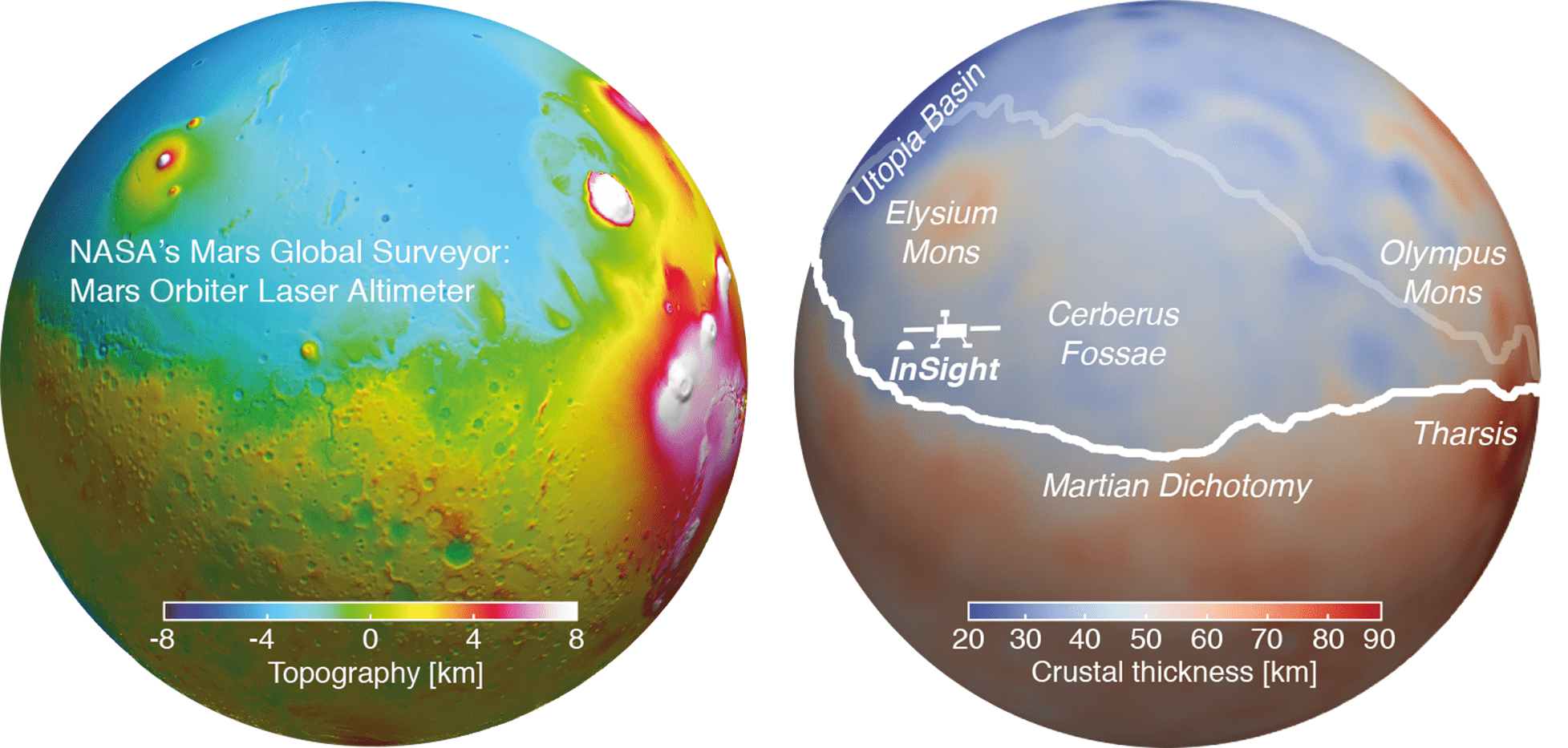The crust of Mars, its outermost planetary layer, is much thicker than the Earth’s crust or even the crust of the Moon. This is according to the latest study that has looked at the internal properties of Mars using the quake data collected by NASA’s InSight in its over four years of activity.
The strongest Marsquake was recorded last year, now estimated to be a 4.6-magnitude tremor. It sent seismic waves through the Martian crust and deep into the planet. Scientists used those tremors, which traveled along the Martian surface circling the planet up to three times, to work out how thick the crust is.
The findings suggest that the crust averages between 42 and 56 kilometers (26 to 35 miles) thick. It is thinnest inside the Isidis impact basin, where it is roughly 10 kilometers (6 miles). The Tharsis province is where the crust is at its thickest, being about 90 kilometers (56 miles). Earth’s crust has an average thickness of between 21 and 27 kilometers (13 to 17 miles). The smaller the planetary body, the thicker the crust on average, but Mars has a crust thicker than that of the Moon, which was determined by the Apollo mission seismometers to be between 34 and 43 kilometers (21 to 27 miles) thick.
“This means that the Martian crust is much thicker than that of the Earth or the Moon,” Doyeon Kim, a geophysicist and senior research scientist at ETH Zurich’s Institute of Geophysics, said in a statement. “We were fortunate to observe this quake. On Earth, we would have difficulty determining the thickness of the Earth’s crust using the same magnitude of quake that occurred on Mars. While Mars is smaller than the Earth, it transports seismic energy more efficiently.”

On the left is a topographic map of the Martian surface, and a representation of the crust thickness is shown on the right.
Image credit: MOLA Science Team / Doyeon Kim, ETH Zurich
The work also expands on the Martian dichotomy, the peculiar problem of the Martian surface that is roughly divided in two: flat volcanic lowlands in the northern hemisphere, and highland plateaus covered in meteorite craters in the south. One idea was that the density of the crust was different, which would produce the differences seen. But this and a previous study have shown that the density of the crust is roughly the same all across the planet. The crust in the southern hemisphere simply extends more deeply.
The work also reported on the radioactive material heating up the interior of Mars, such as thorium, uranium, and potassium. Between 50 and 70 percent of these heat-producing elements are found in the Martian crust. This could explain some of the Marsquake sources, if local melting events continue to take place today.
The study is due to be published in Geophysical Research Letters, and the preprint can be read here.
Source Link: Mars Has A Crust Thicker Than Earth's And A Radioactive Heat Source